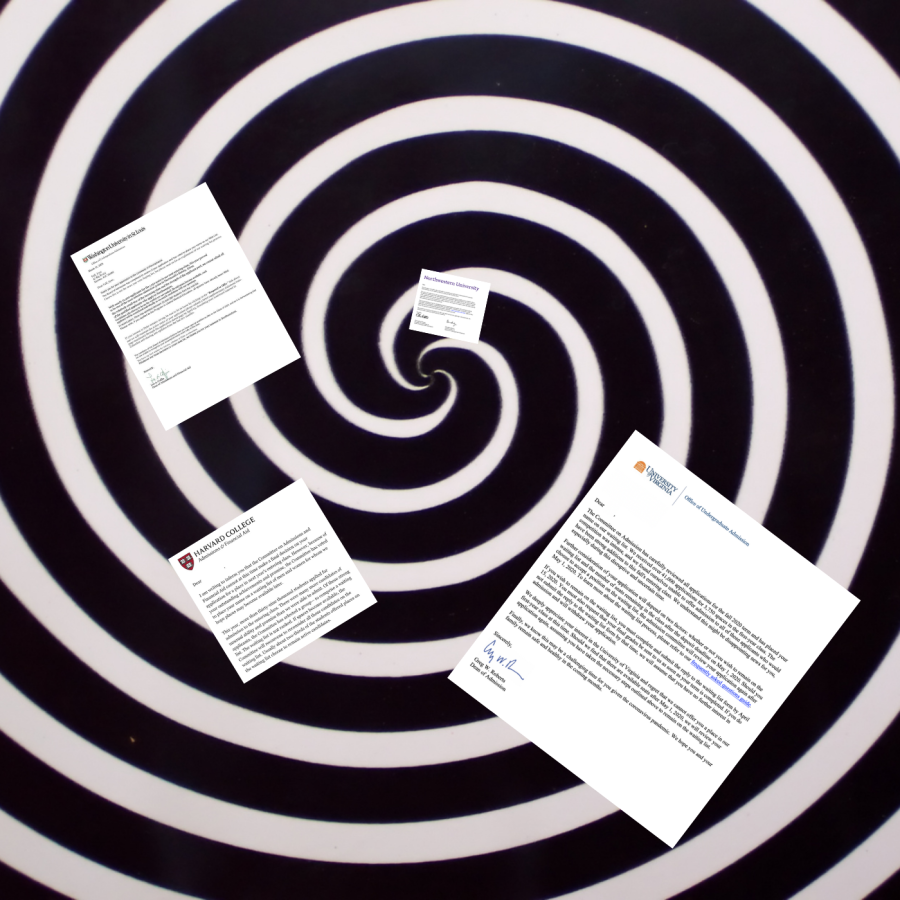Covid era college apps; (or) why you’ve been waitlisted
The process of applying for college has increased with intensity in the past year. While the relief from acceptance letters and the conclusion from rejections make students feel satisfied, students receiving waitlist decisions from schools can not relate. Stuck in limbo due to the ever-changing holistic viewing processes and the influx in competition, current applications to colleges lean much towards more confusing and stressful emotions.
May 18, 2022
Spring has arrived, and with it comes the highly anticipated or horribly dreadful time of college decisions. Whether or not colleges accepted countless students or rejected them, the class of 2022 has noticed a surprising and confusing status within schools: waitlists. Regardless of the way prepared students feel about the process, students across the nation felt surprised in one form or another in regard to their application process.
Disruption creates opportunity, and the college application process followed this precedent. During the peak of the lockdowns within the pandemic, countless ACT and SAT testing sites closed their doors to the public. As such, holistic viewing institutions began to eliminate standardized test scores from their selection process; top institutions such as NYU, MIT and even the University of California school systems have dropped their test score requirements. Certain schools have shifted to becoming permanently test blind.
“A lot of schools are stopping from looking at scores as much. And rather like the actual stuff you said in like the essays you’ve sent in and your extracurriculars, I feel like at this point, they’re more concerned about that. And the rigor you took in high school rather than your GPA or the numbers,” NC senior Carolanne Norris said.
However, the advancements made come at a price. The difference between test-optional and test blind remains stark and important to remember. While both holistic processes prioritize different aspects of a student outside of quantitative data, it increases the value of qualitative ones. This places immense importance on extracurriculars, talents and college essays; factors not always previously highlighted in the selection process. While these pieces of a student’s application could become the turning point in the decision board, a school with a test-optional policy still carries the potential to use test scores as the final zenith.
Colleges typically describe students on waitlists as “borderline candidates”–students who, while capable, just did not stand out amongst the general population of the applicants. Regardless, this practice has dampened the optimism of NC students.
“My boyfriend, Ethan Brown, applied to about 11 schools and three or four of those had wait-listed him. His GPA, which is at the time of applying, was 4.28. His SAT scores were in the 1300s. And his ACT score was 27. If he’s applying to a college that accepts Zelle, and he’s more than eligible, then and UGA, for example, wait-listed him and there, they won’t even give out any information because they’re releasing like the waitlists out in waves and there’s a potential that he won’t even know if he’s off that waitlist by July. Applying should be a breeze…[at] that point it creates a lot of disorganization, especially because how are you supposed to go your whole summer without even knowing where you’re going to college? You can’t prepare, you can’t plan whatsoever,” Norris said.
Other students carried more luck. Whereas one student‘s ability to go into school remains in a state of limbo, another can build from their experience and remember it fondly, adding to the growing pains of the transition to college.
“I was waitlisted for University of California Irvine and Santa Barbra, but I was already accepted by my top schools (University of Georgia), so I was definitely not nearly as affected as other people. I’m so thankful,” senior Shawn Mazayck said.
Overall, the process of applications contains countless stressors, but the defining factors within the new application process lead to the buildup for the future seniors.







